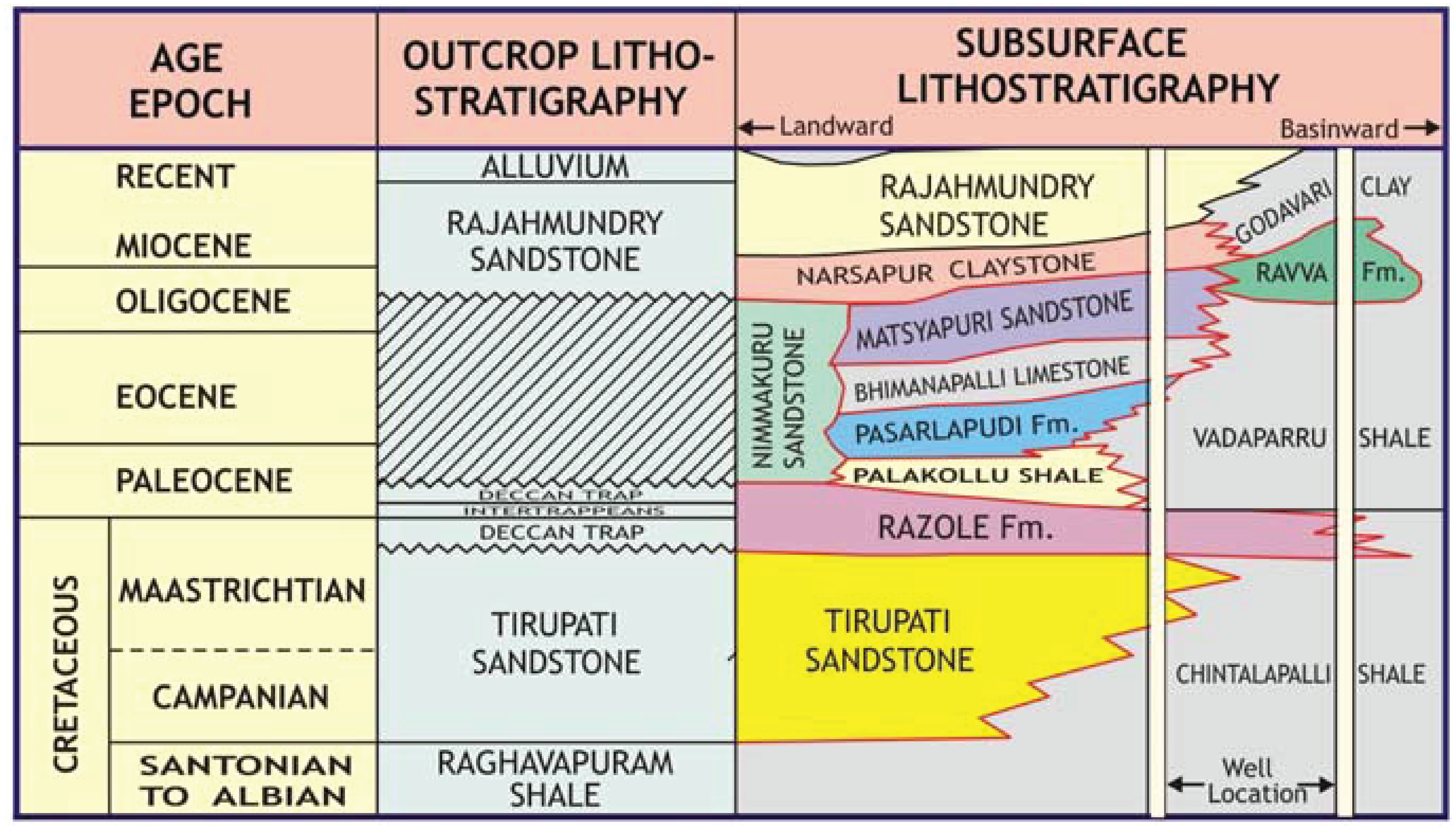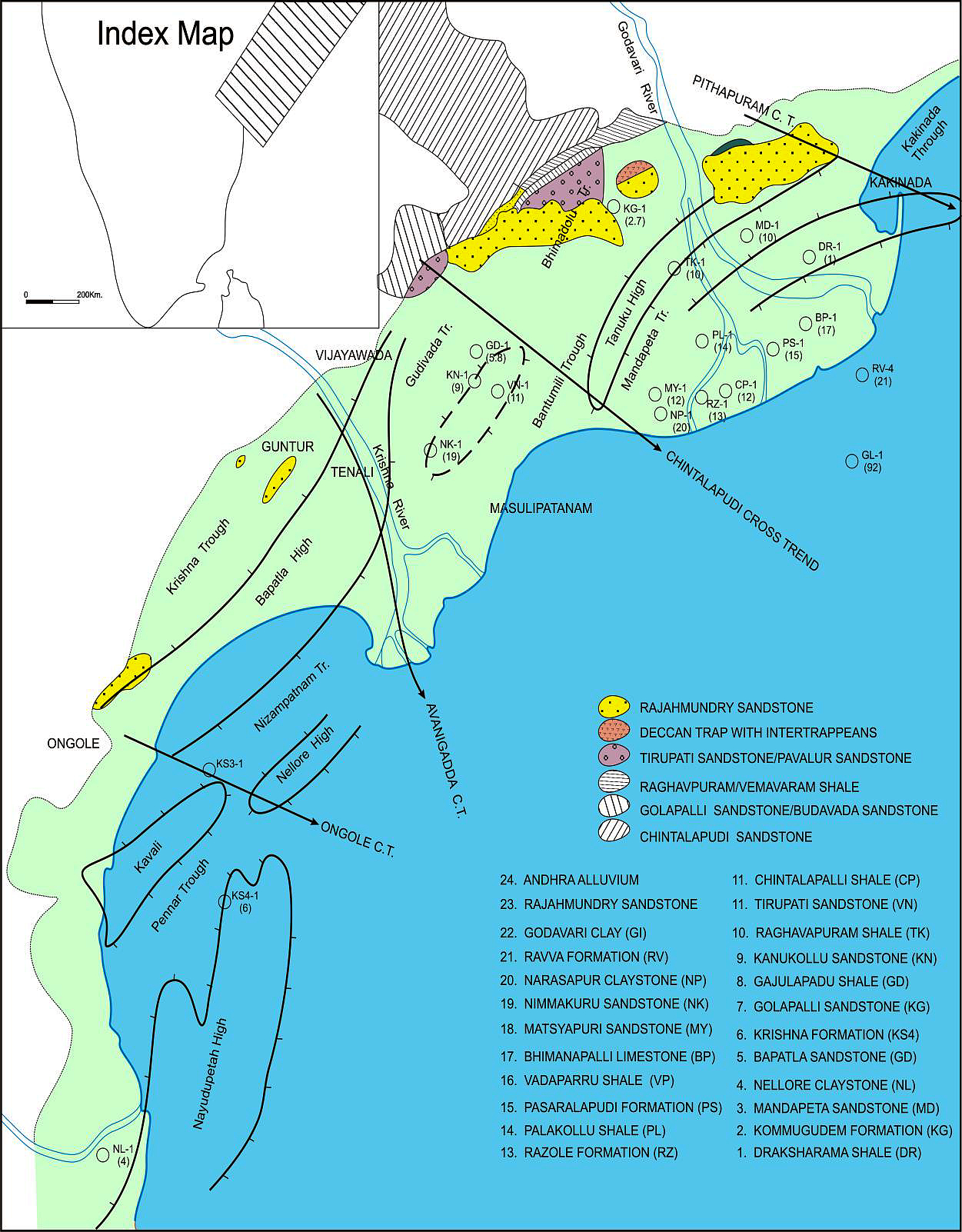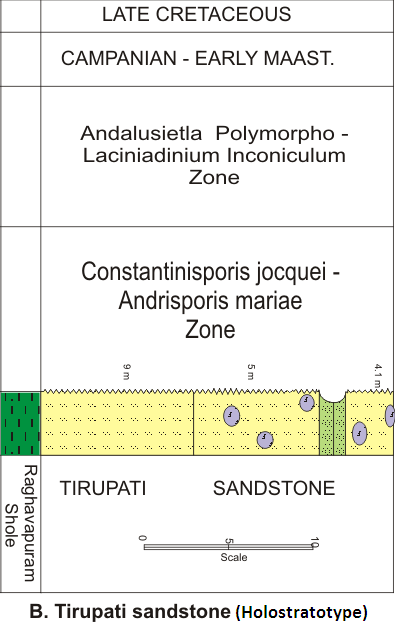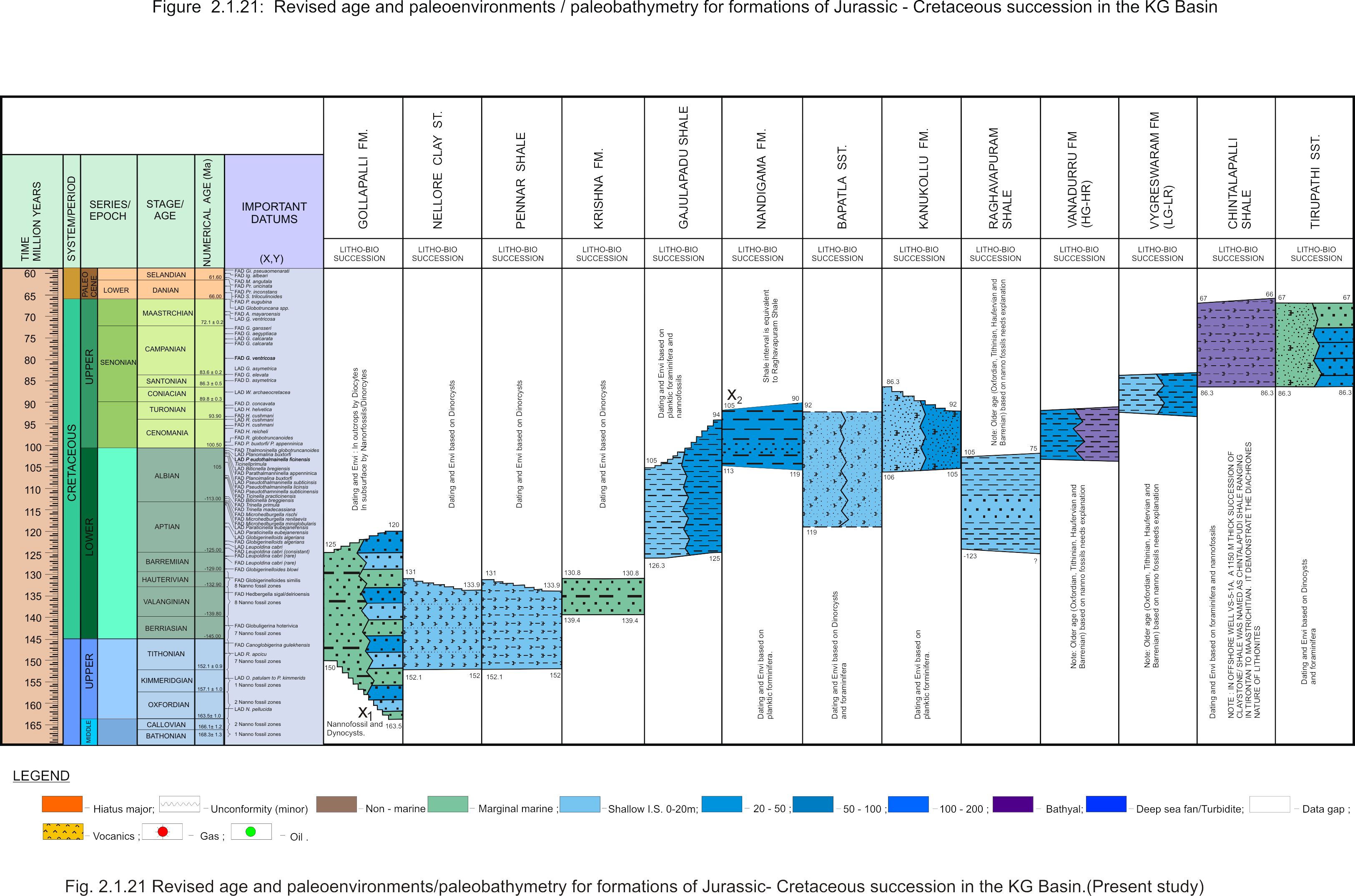Tirupathi Fm
Type Locality and Naming
LANDWARD and BASINAL: The type section is exposed at the top of scarp near village Chinna Tirupathi. The hypostratotype is in the well Vanadurru-A (depth interval: 1160-1718 m). It was named after the Chinna Tirupati village by King (1870) and later ONGC team steered by Venkatarengan et al. (1993) adopted and issued as Document-VII by KDMIPE, ONGC, Dehradun (1993). [Original Publication: King, W. (1870) The Upper Gondwanas and other formations of the Coastal region of the Godavari district. Mem. Geol. Suv. Ubd, Vol. 16, pt-13, pp.]. Reference well: Well Vanadurru-A, Interval 1160-1718 m and thickness 558 m.
Synonyms: Tirupathi Sandstone
[Figure: Generalized Late Cretaceous-Cenozoic lithostratigraphy transect, Krishna-Godavari Basin. From Keller et al., 2011, Jour. Geol. Soc. India, 78:399-428, their Fig. 2]
[Figure: Map showing the locations of designated holostratotype section for the formation in the KG Basin (After ONGC, Pandey and Dave, 1998) in Raju et al., 2021, ONGC Bulletin, Special Issue, Vol. 56, No. 2]
Lithology and Thickness
Sandstone. The type section is exposed at the top of the scarp at Chnna Tirupati village. This formation consists of medium- to coarse-grained, whitish to pale buff clayey sandstones. At places, they are gritty. They are well bedded at some places and often lateritized. In the reference section (Well Vanadurru-A), it is dominantly sandstone with minor shale at the top. The sandstones are milky white to greenish, moderately hard, fine to medium grained and feebly calcareous, moderately hard and compact. It has a thickness varying from 50-558 m.
[Figure: Lithology and spore-pollen datums of the holostratotype of the Tirupati Formation in the outcrops at Chinna Tirupati village (after Bijai Prasad, 1999)]
[Figure: A revised stratigraphy chart for the Jurassic and Cretaceous of the KG Basin showing lithological units, their age limits and paleoenvironmental setting (present study) in Raju et al., 2021, ONGC Bulletin, Special Issue, Vol. 56, No. 2]
Relationships and Distribution
Lower contact
Unconformable with the Vygreswaram Fm.
Upper contact
Conformable with the Razole Fm.
Regional extent
GeoJSON
Fossils
Spore and Pollen
Age
Depositional setting
Marginal marine.
[Figure: Revised age and paleoenvironments/paleobathymetry of formations of Jurassic-Cretaceous succession in KG Basin in Raju et al., 2021, ONGC Bulletin, Special Issue, Vol. 56, No. 2]
Additional Information




